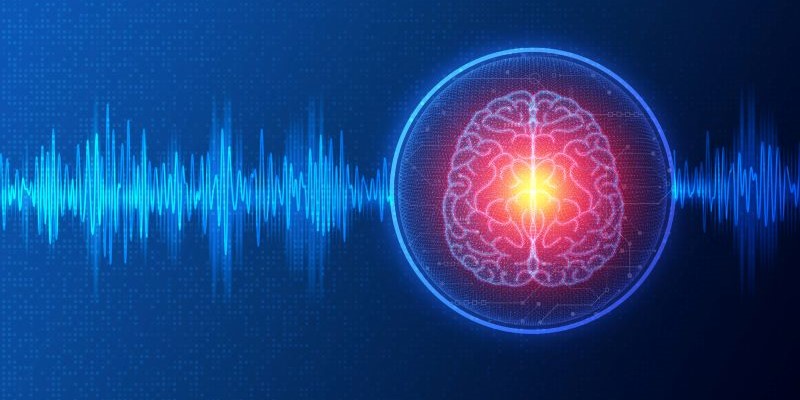| By Barbara Wexler, MPH |
Epilepsy is a chronic (long-term) neurological disorder where people have repeated seizures because of unusual or abnormal electrical activity in the brain. These seizures can show up in many different ways, from nearly imperceptible moments of zoning out to intense shaking and severe convulsions. There are many different potential causes for epilepsy, including genetic factors, head injuries, strokes, or infections affecting the brain. Often, physicians can’t pinpoint exactly why someone develops epilepsy, making the condition even more complex.
Epilepsy doesn’t discriminate—it can affect anyone, regardless of age, sex, race, or ethnicity. In fact, about 1 in 26 people will experience epilepsy at some point in their lives. In the U.S. alone, more than 3 million people are living with epilepsy. The likelihood of developing epilepsy changes with age; it’s more common in children and older adults. While many people first experience seizures in childhood, it can also begin later in life, often due to other age-related health issues.
Epilepsy affects millions of people globally. By understanding its causes, symptoms, diagnosis, and treatments, we can raise awareness and help reduce the stigma around it. With ongoing research, there’s hope for ever-improving treatments and, eventually, a cure.
Please see the epilepsy portal in the Gale Health and Wellness database for much more information.
Diagnosing epilepsy involves taking a thorough medical history, performing complete physical and neurological exams, and running other diagnostic tests. The most common diagnostic test is an electroencephalogram (EEG), which tracks and records the brain’s electrical signals and can identify abnormal patterns associated with epilepsy. Other diagnostic imaging techniques include brain scans like magnetic resonance imaging (MRI) or computed tomography (CT), which are used to identify structural abnormalities that might be causing the seizures. When someone has had two or more unprovoked seizures, they’re usually diagnosed with epilepsy.
Seizure triggers vary from person to person, but some common ones include not getting enough sleep, stress, drinking alcohol, rapidly flashing lights, and hormonal changes. Even certain medications or illnesses can set off a seizure in people who are prone to them. Identifying personal triggers is key to managing the condition, day to day.
Epilepsy is more than just seizures, however. The condition can also create emotional, physical, and cognitive challenges. People can get hurt during a seizure, especially if it happens while they’re doing something like driving or swimming. The unpredictability of seizures can also lead to anxiety, depression, or feeling isolated. Some people with epilepsy may have trouble with memory or concentration, especially if they have frequent seizures.
While there’s no cure for epilepsy yet, there are several ways to control seizures. Prescription medications called antiepileptic drugs (AEDs) are usually the first line of defense. The right drug depends on factors like the type of seizures, the patient’s age, and overall health. For some children with hard-to-treat epilepsy, diets like the ketogenic diet, which is a diet that’s high in protein and fat and low in carbohydrates, may help to reduce the frequency of seizures, or in some instances, even eliminate them.
For more information on antiepileptic drugs, please see The Gale Encyclopedia of Neurological Disorders, 4th Edition, available in the Gale Health and Wellness database.
When medications don’t fully control seizures, there are other treatments available. These include brain surgery to remove the seizure-causing area, vagus nerve stimulation, and responsive neurostimulation. Vagus nerve stimulation involves sending electrical signals through a nerve in the neck to help reduce seizures. Responsive neurostimulation is a newer technique where a device is implanted under the scalp and connected to the brain with electrodes. The device detects seizure activity and responds by sending signals to stop it. These treatments can help many people have fewer seizures and live better lives.
Seeing someone having a seizure can be frightening, but if you do, it’s important to stay calm and follow these steps:
- Remain calm and reassure others around you.
- Move any objects away that could cause injury.
- Time the seizure—if it lasts more than five minutes, call for emergency help.
- Don’t restrain the person or try to stop their thrashing or other movements.
- Help them to the ground, if possible, and turn them on their side to keep their airway clear.
- Afterward, offer comfort, as they might feel confused or disoriented.
Research into epilepsy is constantly evolving. Scientists are exploring new ways to tackle the root causes of epilepsy, from gene therapy to advanced brain surgeries. As technology improves, the hope is that one day soon, we’ll not only be able to better control epilepsy but cure it.

